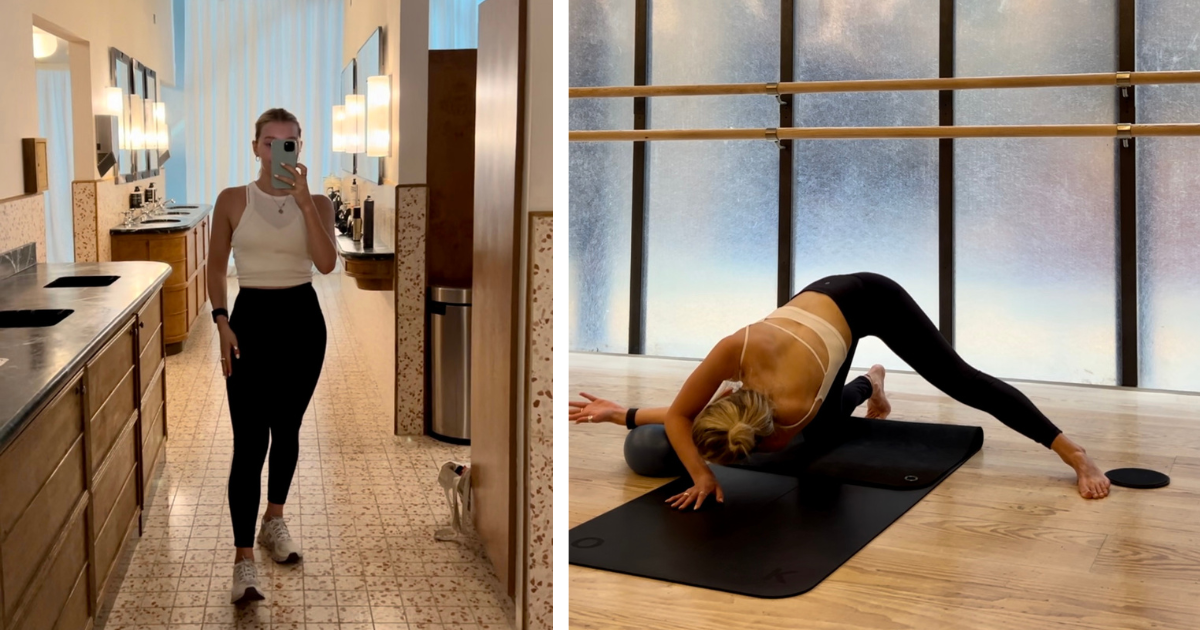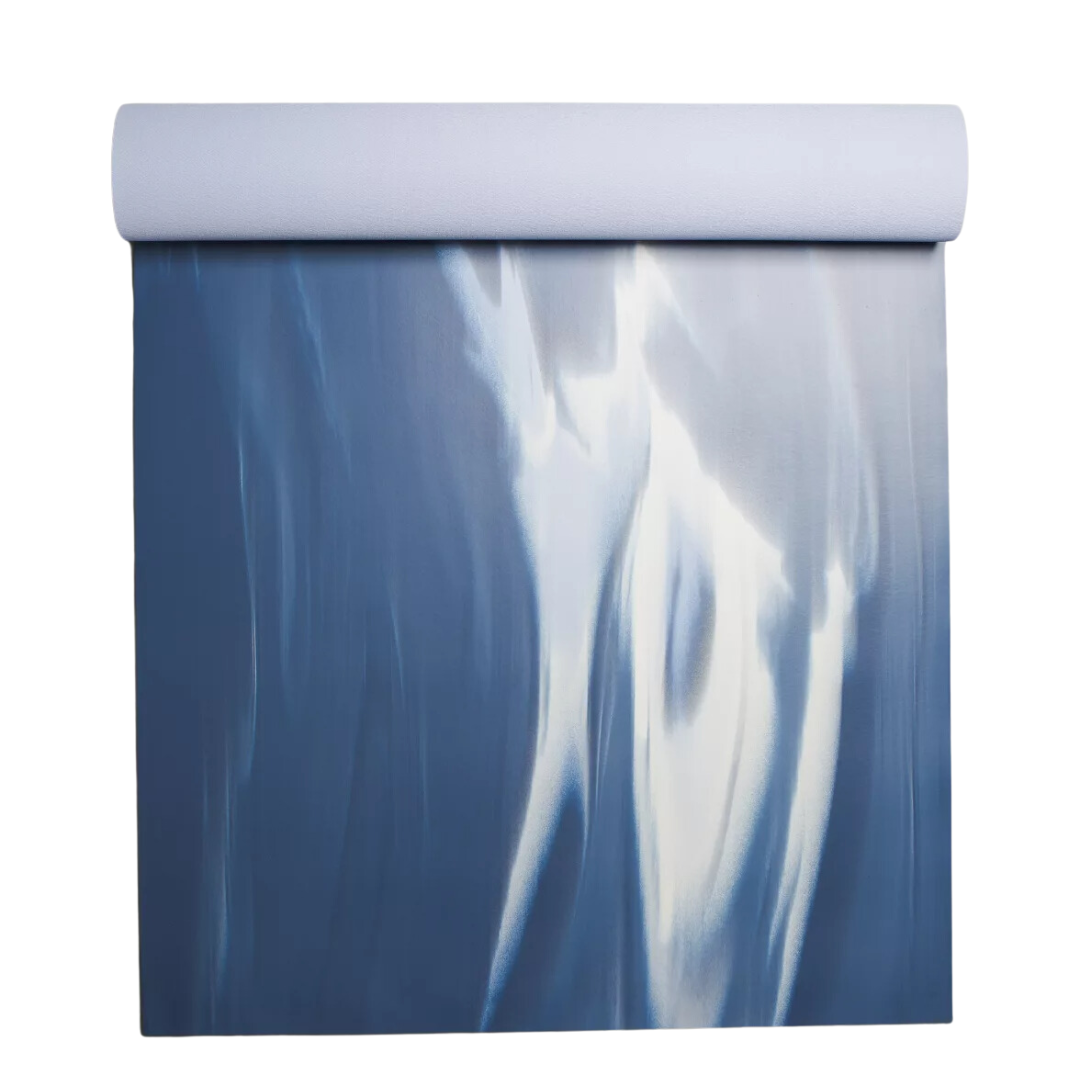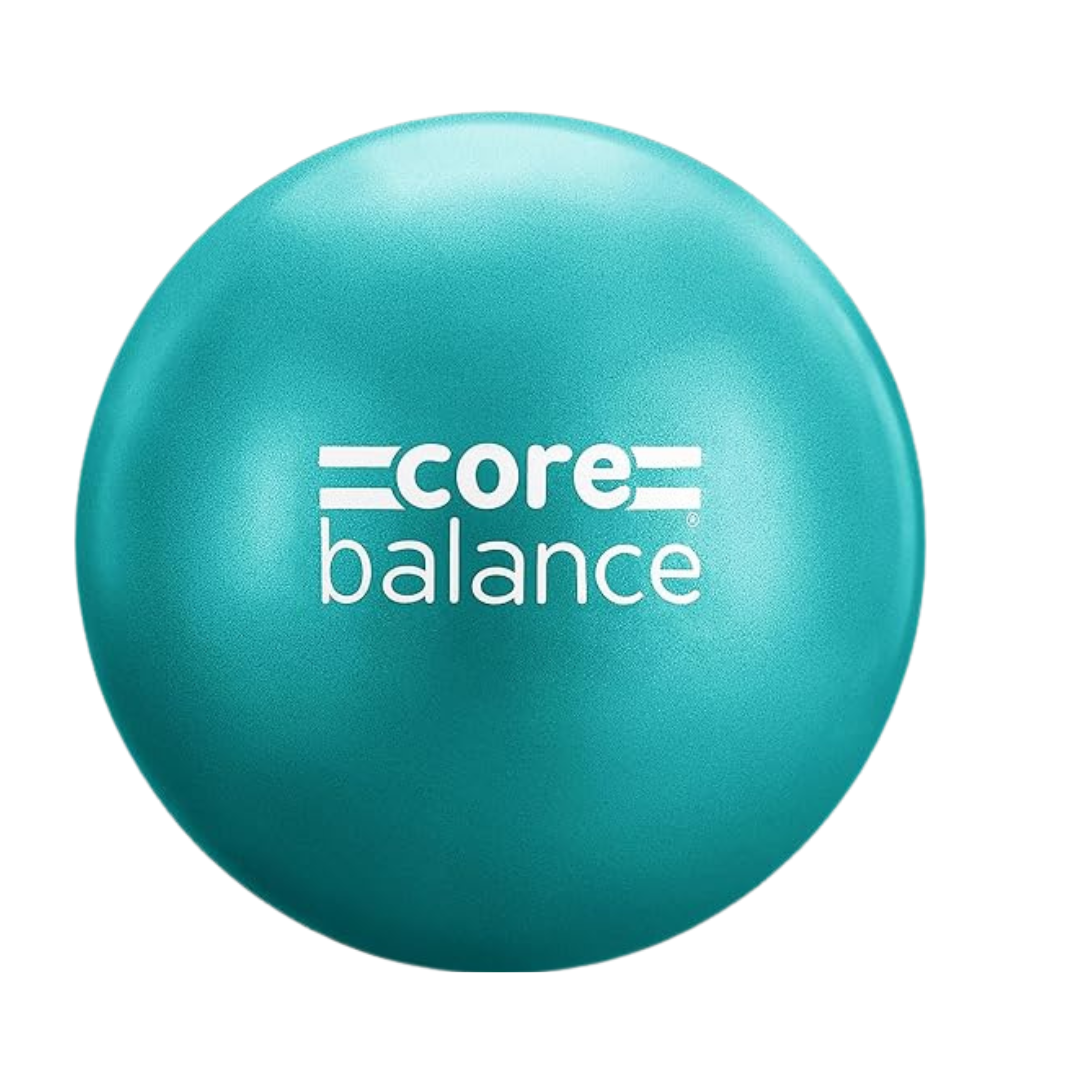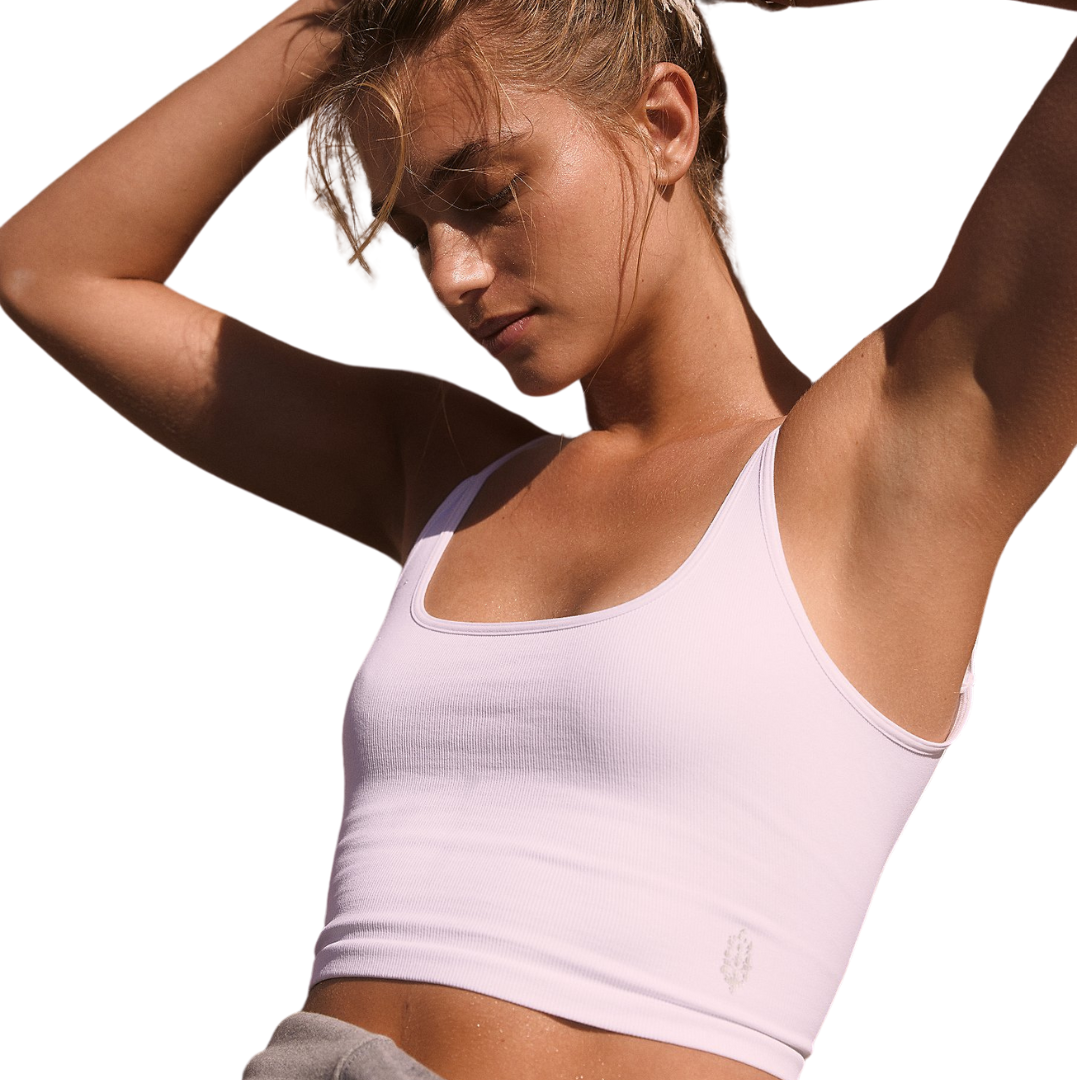5 simple Pilates moves that I add to every home strength workout to boost muscle
Keen to give these a go?


Pilates workouts are the sweat session of the moment - and you don't need us to tell you that. No doubt you've scrolled through one of the millions of posts online singing the workout's praises. And thankfully it's also popular IRL: Pilates was the most booked workout of 2023 on workout booking app ClassPass, where the types of classes you can book range from Reformer Pilates to Tower classes.
Personally, Pilates has become invaluable to me as a Health and Fitness Editor and fitness trainer trying to recoup after an injury. As someone who does a decent amount of exercise - it is basically my job to workout - my body can often get tired and tight, with small imbalances and weaknesses building up over time. And after a few setbacks (including a microfracture and joint pain), I turned towards Pilates to build strength and stability in parts of my body that are often neglected in traditional training.
But, let's be frank, Pilates classes are expensive. And, when trying to balance weight training and running alongside the rehab workout, it can get a little OTT. The perfect balance I've found is to use Pilates exercises in my warm-ups before running and once a week during a home workout, usually plotted into a day I'm too busy to get to the gym. And, if you're looking for Pilates exercises to do from home, I'm here to share the moves that stay in my routine every single session. Don't miss our guides to Pilates for beginners, the viral Pilates wall workout, and 20 minutes Pilates workouts, while you're here.
5 Pilates moves to try tonight
What is Pilates?
For those who still aren't sure what separates Pilates moves from any other exercise, let us explain. Pilates is the workout designed by Joseph Pilates in the 1920s as a form of rehabilitation for injured soldiers. It was so good at helping them build strength and recover that the method of movement spread.
While it's gone through many iterations over time, most Pilates classes will still be grounded in the original programming that focuses on strength, stability, stretching and breathwork. It's the mind-muscle connection, micro and maximal movements, alignment and activation that makes Pilates so unique - and so good for us.
Is Pilates good to do from home?
As I said, I'm doing most of my Pilates work from home. I'm someone who has been training for nearly a decade and, over that time, have built a strong mind-to-muscle connection. What does that mean? Well, I can think about engaging very specific muscles to perform a movement and articulate parts of my body. That's a skill that comes with time and that is why I recommend people who are new to Pilates test out the workout in a class so an instructor can give you tips to help you use your body well.
However, one of the beauties of Pilates is that it can be done using bodyweight exercises alone, so it is a brilliant home workout to try. Doing Pilates from home also means you can spend as much or as little time as you need working through the movements. I like to spend some extra time thinking about how I'm using my body while doing Pilates from home.
Celebrity news, beauty, fashion advice, and fascinating features, delivered straight to your inbox!
My favourite Pilates exercises to do from home:
1. Hip circles
What? Hip circles are done from a tabletop position, taking one leg from under you and drawing a circle-like shape with your knee bent at 90 degrees. You need to try to keep both hip bones pointing down towards the mat, while moving your knee as far as it can go.
Why? Hip circles are a brilliant way to move the ball and socket joint of your hip through its full range. It improves mobility while also activating your glute, the muscle used to turn and rotate your hip. The key with this move is to keep your pelvis and upper body completely still, which also challenges your stability and your core strength.
Regress and progress: I like using a ball behind my knee to activate the hamstring, and you can also do it with ankle weights to fire up the glute. If you're struggling, lower your forearms towards the floor for more support.
How long for: I like to do at least ten circles on each side.
2. Glute bridge
What? You'll likely have done a glute bridge before, but did you know it's originally a Pilates move? To do it, you'll lie on your back with your feet flat on the floor and knees pointing towards the ceiling. Then tilt your pelvis back, pushing your pubic bone towards your face and thinking about drawing your ribs towards your hips. Maintaining that position through the midsection, peel your glutes and spine off the floor towards the ceiling, then lower back down.
Why? This exercise moves through everything you need to build a functional body: spinal articulation, pelvic stability and glute activation. There's a lot to think about in order to do this exercise properly, but it's packed with huge benefits.
Regress and progress: Adding a resistance band around the knees or weights across the hips is the best way to increase resistance and load up the glutes. However, you can also bring the feet slightly closer together and place a Pilates ball between the knees to squeeze as you lower up and down for inner thigh work.
How long for: I do quite high reps of glute bridges, especially if it's bodyweight. Aim for fifteen to 20 reps, rest and repeat two or three times.
3. Thread the needle
What? It's back to all fours for this one. Keeping your hip bones pointing towards the mat, you'll twist through the spine and raise your right hand towards the ceiling. Then thread it under the left arm so your right shoulder comes towards the floor. Repeat on the other side.
Why? You can't beat a good spinal twist to relieve discomfort. But this exercise also helps stretch out the chest - which can get tight from being sat down with our shoulders hunched - and mobilise the upper back, which doesn't often get a lot of movement.
Regress and progress: Place a ball by your grounded wrist to slide along as you thread your arm under can deepen the stretch.
How long for: I like to do around five each side.
4. Four-point toe tap with external rotation
What? This leg lift is done from the all-fours position with one leg extended out behind you. Point the toes towards the corner of the mat to open the hips, then raise the leg toward the ceiling.
Why? This angle works into the abductor and glute med, around the side of the hip, which is so useful for people who do a lot of running and strength training. A lot of those workouts are focused on moving up and down or forward and back, and the muscles at the side of the body can become weak. This helps stabilise and strengthen to even out imbalances.
Regress and progress: This move is best done exactly as it is. For an extra challenge, just increase the reps.
How long for: Aim for a slow and controlled ten reps on each side.
5. Lying toe taps
What? Lying on your back, take your legs towards the ceiling and bend your knees at a right angle. Keeping the knee bent at 90 degrees, lower one foot towards the floor so the toe taps down, then lift back up. Repeat on the other side.
Why? This is a brilliant exercise for activating and 'waking up' the core as you use the abdominals to pull your leg up. But it also works effectively to strengthen the lower abdominals, which aren't as easily targeted in classic exercises like crunches, and the hip flexors.
Progression and regression: You can keep your feet on the floor and focus on the lifting phase if keeping your legs in the tabletop is too much.
How long for: I try to do ten on each side, then rest and repeat two or three times.
My go-to Pilates kit:

Chloe Gray is a freelance journalist who writes and talks about health, fitness, and wellbeing through a feminist lens. She was part of the launch team for Stylist magazine's fitness brand, Strong Women, and has written for i news, Women's Health, Red magazine, Good Housekeeping, Refinery29, and more. She's all about building mental and physical strength, eating delicious food that fuels you well, and making the fitness industry more accessible and enjoyable. She's also a qualified fitness trainer and research nerd, so you can be sure everything you read is backed by proper science.




